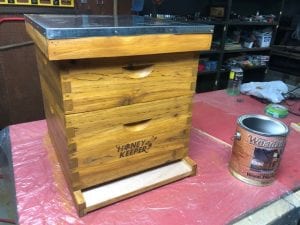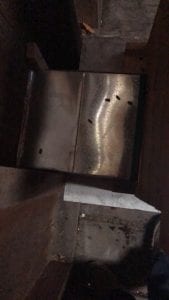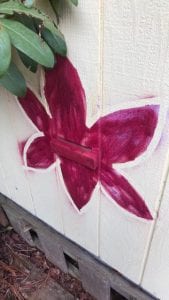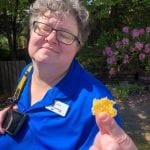
Raising honey bees in Southeast Alaska can be challenging. Two beekeepers shared their experiences during a recent call-in show on KRBD, and offered advice on building a successful colony in a rainy environment.
This is Chet Hugo’s first year raising bees at his Ketchikan home. Hugo says he’s been studying beekeeping for over two-and-a-half years and is having success with his first hive. He says the biggest difficulty with beekeeping in Southeast is the rain.
“One of the challenges is when you do a hive inspection and it’s raining, bees don’t like that. They will get mad at you and start stinging. So if your beehive is inside, like mine is, then you can do your beehive inspection when it’s raining outside and they don’t seem to mind.”

Hugo says hive inspections are done once a week to make sure the bees have enough space, honey combs aren’t being built across the frame, and the queen is in the hive and healthy.
In addition to making inspections easier, Hugo says having hives indoors keeps them dry, preventing the wood from rotting and growing mold. His hive is in his garage.
“My beehive is a normal Langstroth beehive, but it’s connected to the outside via a small piece of duct work. So the beehive is out of the weather.”
Another problem with having an outdoor hive is that honey attracts bears. Hugo says a typical Langstroth hive can produce up to 150 pounds of honey annually, 50 of which needs to be left in the hive so the bees can overwinter. In addition to providing honey, Hugo says his garden began to produce an abundance of tomatoes with the help of the pollinators.

Mike Bergen is not currently raising bees in Alaska, but was a beekeeper for about five years elsewhere. He says he explored the idea of beekeeping in Ketchikan, but didn’t think it looked promising. Bergen participated in a beekeeping presentation at the Ketchikan Public Library last year and says after hearing about local successes, he’s considering starting his own hive.
“There were varying degrees of success, in where some people would make it part way through the year, some people would do better than others. I think the code really is ‘moisture control,’ what Chet was alluding to is making sure that the bees can withstand the weather.”
Bergen says, as a species, bees want to increase their population. He says it’s the job of the beekeeper to manage that and make sure there is adequate space.
“There’s (a method) called ‘splits’ where you take some frames of bees and honey and eggs and all the different stages, and you move them to a new hive. And then they’ll propagate there until they’re ready and they’ll swarm again. The whole job of a beekeeper is pretty much swarm management after a certain point.”

To start a colony, needed supplies and space are minimal. Hugo says his hive and work area are in a 4-foot square space. He says there are bee starter kits that include a hive, hive tool, smoker and bee suit. Bees are purchased separately. Hugo’s colony is Buckfast bees, a species bred in England for wetter, colder weather.
“The Buckfast bee is also bred to swarm less, to be a little bit more efficient which means that they consume less honey and they store more. And they were bred to be mellow.
Hugo says when he first started beekeeping, he wore a full bee suit, but now wears only gloves and a beekeeping veil.
Bergen says the worker bee’s life cycle is about 21 days from egg to maturity, then 20 more days as an adult. All workers are female. The queen bee can live several years, constantly replenishing the worker population. Bergen says bees, for the most part, are self-sufficient.

“The queen produces eggs and the colony monitors the queen. They provide for her needs and she continues to lay eggs. And if for some reason she quits laying eggs, the workers know and they’ll immediately take the larva of a bee or several bees and make queen cells or supersedure cells, and they’ll basically dethrone that queen and introduce a new one, make their own.”
For those interested in learning more about beekeeping in Southeast, Bergen and Hugo recommend reading books, asking local beekeepers, and viewing YouTube videos. Hugo produced several videos and set up a Facebook group – Ketchikan Alaska Beekeepers. Their biggest advice for bee hive success in Southeast Alaska is to keep it dry.
_____________________________________________________________________________
Beekeeping interview on KRBD – August 19, 2019 – https://www.krbd.org/2019/08/19/beekeeping-in-ketchikan/
Alaska Rainforest Beehive Episode 2 – First Hive Inspection – https://www.youtube.com/watch?v=Of7KTGYwRBY&t=202s
Alaska Rainforest Beehive Episode 5 – Bad Comb – https://www.youtube.com/watch?v=o8JQw03czww&t=72s
Ketchikan Alaska Beekeepers Facebook Page – https://www.youtube.com/watch?v=o8JQw03czww&t=72s





